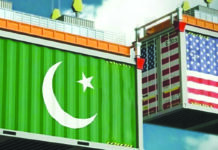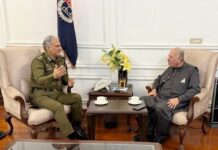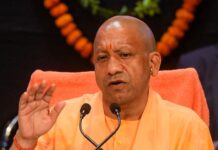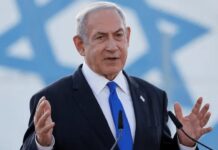Adolf Hitler understood something dangerous and enduring. Power was not just about tanks and treaties. It was about theatre. He believed nations could conquer minds before they conquered territory.
In Mein Kampf, Hitler wrote, “All great movements are popular movements. They are the volcanic eruptions of human passions and emotional sentiments…” He knew symbols mattered. Uniforms, parades, weapons on display not just to intimidate enemies, but to dazzle followers. The swastika, the Luftwaffe flyovers, the burning books, all fed into a cult of national superiority designed to make Germany look invincible, even when it wasn’t. Strategic logic bowed to ideological hunger.
That same hunger now animates in Modi’s India, which is predominantly under the ideological grip of the Rashtriya Swayamsevak Sangh. The RSS sees itself as the cultural and civilizational compass of India. It does not just seek military strength. It seeks global, symbolic, and civilizational recognition. Much like Hitler’s Third Reich, the RSS-led state obsesses over symbols like the transboundary aggression, renaming cities, making imaginary maps, and launching satellites with saffron pride. The obsession with being seen as a Vishwa Guru or world leader resonates with the Nazi dream of Lebensraum and Aryan supremacy which are more about identity and imagined destiny than about material threats.
India’s strategic choices, like its ambitious missiles programme, vertical nuclear proliferation, and development of dual-purpose satellites seems like the tail is wagging the dog. These programmes look less like responses to real national security threats and more like symbolic acts to win a seat at the global power table.
Strategists and scholars have long studied this phenomenon. Deborah Welch Larson explains in Origins of Containment that “prestige is a social reward” and for rising powers that reward can matter more than actual safety. Barry Buzan, in People, States and Fear, writes that security policies often reflect the elite’s craving for recognition rather than real threats. Robert Jervis, in Perception and Misperception in International Politics, says leaders often fear looking weak more than being weak. Prestige, he warns, can overshadow strategic logic.
India’s ICBM programme offers a textbook case where prestige, rather than national security requirements, is the driving force. The Agni-V, with an expected range of 5500 km-8000 km, and Agni-VI, with an estimated range of 9000 km-16,000 km (depending upon the payload), missiles can strike far beyond the region. Yet India faces no credible existential threat from Europe or North America. These long-range capabilities appear more about demonstrating strength than deterring immediate dangers. The missiles serve as trophies, not just weapons. Showcasing ICBM capability to the world signals its desire to stand alongside other nuclear giants.
History is full of strongmen whose chauvinistic flair has pushed regions into chaos and conflict. One once marched through Europe under the guise of Anschluss and another is now emerging in South Asia with the chimera of Akhand Bharat. Strategic balance cannot survive on vanity projects. If the script remains unchanged, the region may once again be cast in a play that ends in ruin.
India’s space ambitions tell the same story. LSE Fellow Dr. Dimitrios Stroikos, in his article “Why does India want to be a space power? Chandrayaan-3 and the politics of India’s space programme” , argues that highly visible techno-scientific projects serve as markers of power, status and modernity, a practice rooted in the 19th century when techno-scientific advancement emerged as a standard of “civilization” demarcating the “society of civilized states” from non-European societies through a “techno-scientific orientalist” discourse. In this way, the space programme can be understood as a symbol of postcolonial India’s modernity, statehood, and national prestige. From this perspective, the pursuit of the Chandrayaan lunar programme is part of India’s effort to climb up the ladder to the top tier of the hierarchical global space order and have a bigger “seat at the table’’ of space affairs. The 2019 anti-satellite test, Mission Shakti, revealed more than that. India demonstrated its military aspirations in space. The Indian Space Research Organization no longer just launches satellites for civilian purposes. It now asserts India’s place in the militarized orbit. This isn’t just about national security. This is about optics.
Ashley J. Tellis, an Indian-origin expert on strategic issues, explained a very interesting point regarding the Indian strategic thought in his article India’s Great Power Delusion. He writes that India isn’t comfortable with the US-led unipolar world order. Despite all the help it is getting from Washington against Beijing, India strives for a world with multiple centres of influence and where it too can get a place at the high table.
This belief was expounded by the Indian Prime Minister Atal Bihari Vajpai in 2004, when he declared that “India does not believe that unipolarity is a state of equilibrium in today’s world.” India, he further asserted, would work to build a “cooperative, multipolar world which accommodates the legitimate aspirations and interests of all its component poles”. While analyzing the procurement, development and deployment of strategic weapons of India, this postulate of Indian strategic thought should be kept in mind.
Washington should also be wary of the fact that whatever leniency it is providing to New Delhi, for the containment of Beijing, would one day be detrimental to its influence and position. In his article, Tellis also maintains that with the present economic trajectory (which is likely to continue), India could barely manage to have half of China’s GDP in the next 25 years. Which proves the notion that New Delhi’s self-imagination as a great power is by far a delusion.
Prestige-driven militarism may earn loud applause from a hyper nationalist audience at home, but applause does not equal security. At the heart of this lies the BJP’s political model. Projecting India as a rising great power is not just a foreign policy aim but a domestic political script. For many, Narendra Modi is cast as the macho leader who will place India on par with global giants. The symbolism of strength feeds public imagination, even if the substance of strategy falls short.
History is full of strongmen whose chauvinistic flair has pushed regions into chaos and conflict. One once marched through Europe under the guise of Anschluss and another is now emerging in South Asia with the chimera of Akhand Bharat. Strategic balance cannot survive on vanity projects. If the script remains unchanged, the region may once again be cast in a play that ends in ruin.























p71xw3